ZTE OPENII WCDMA/GSM(GPRS) Dual-Mode Digital Mobile Phone User Manual ZTE Open draft
ZTE Corporation WCDMA/GSM(GPRS) Dual-Mode Digital Mobile Phone ZTE Open draft
ZTE >
User manual

1
User Manual
OPEN II
2
Made with a Mission
Firefox OS was created to free you from the rules and restrictions
imposed by other mobile phones and give you control over the
information you store and share. It’s made by Mozilla as part of
our mission to put the power of the Web in everyone’s hands.
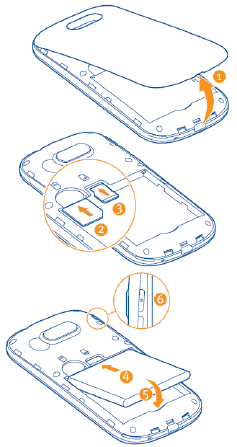
3
Power on
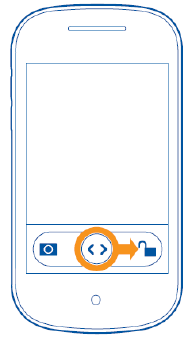
4
Unlock phone
Drag the arrow to the right to unlock your phone.
If the screen is off, press the Power button.
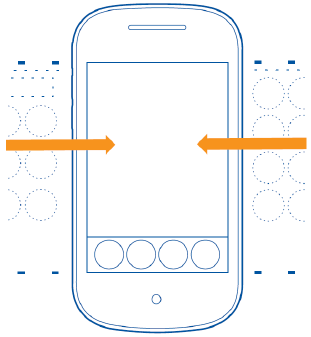
5
Navigate Home
Use Search to discover content or swipe left to accessyou're your
apps.
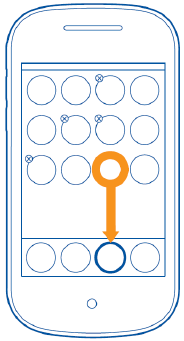
6
Personalize Home
Touch and hold an icon to move it within the grid or in and out of
the dock. Tap the “x” to delete it.
Touch Home to finish editing.
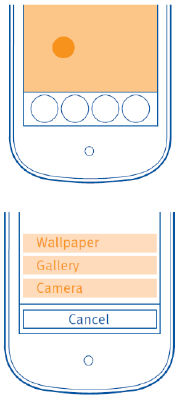
7
Customize wallpaper
Touch and hold the wallpaper to select or create a new one.
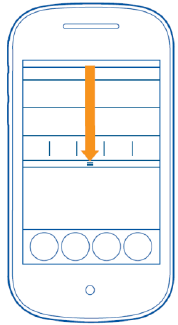
8
Open notifications
Swipe down from the Status Bar to see notifications, quick
settings, and your mobile data use. Tap a notification to go to the
related app.
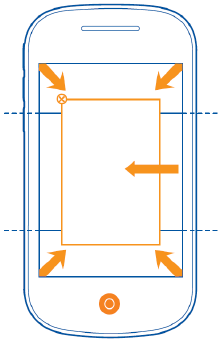
9
Switch applications
Press and hold the Home button and then swipe left to see other
open apps. Tap an app to switch to it.
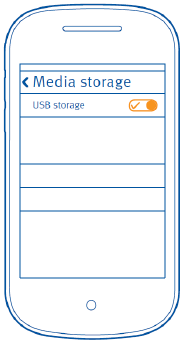
10
Connect to a computer
Insert a microSD card. Then turn on USB Storage in the phone
settings to transfer all your photos, music, and video.
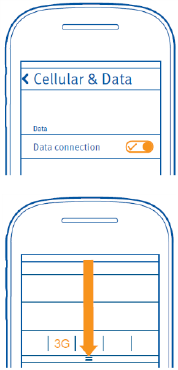
11
Manage mobile data
Turn your Internet connection on and off from the Settings app or
quick settings.
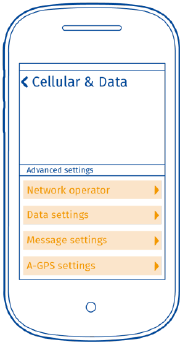
12
Configure mobile networks
Select network and roaming preferences, set APNs for mobile
data, multimedia messaging, and A-GPS from the Settings app.
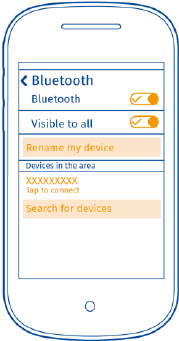
13
Connect to Bluetooth® devices
Access the phone’s Bluetooth capabilities in the Settings app.
After turning on the Bluetooth function, tap a device your phone
has found to connect with it. If you want to connect to the phone
from other devices, turn on Visible to all and rename your device
properly if necessary.
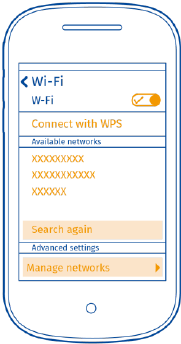
14
Connect to Wi-Fi® networks
Access the phone’s Wi-Fi capabilities in the Settings app.
After turning on the Wi-Fi function, tap an available network your
phone has found to connect with it. Your phone supports WPS
and you can join hidden networks in Advanced settings.
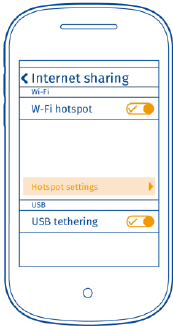
15
Share Internet connection
Share your phone’s Internet connection with other devices in the
Settings app.
To allow Internet sharing through Wi-Fi, tap Hotspot settings to
set up network name, password and security. Then turn on Wi-Fi
hotspot.
To share Internet through USB connection (for example, share
Internet to a computer the phone is connected to via USB), turn
on USB tethering.
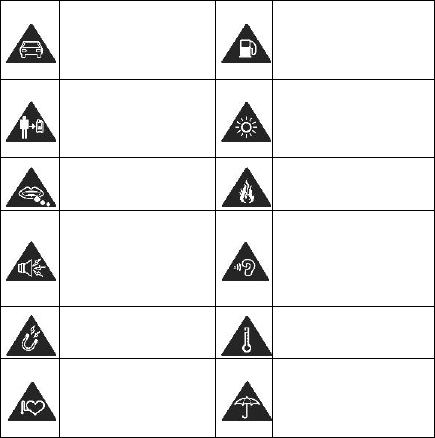
16
For Your Safety
General Safety
Don’t make or receive
handheld calls while
driving. Never text
while driving.
Don’t use at gas
stations.
Keep your phone at
least 10 mm away
from your ear or body
while making calls.
Your phone may
produce a bright or
flashing light.
Small parts may
cause choking.
Don’t dispose of your
phone in fire.
Your phone can
produce a loud sound.
To prevent possible
hearing damage, do
not listen at high
volume levels for long
periods.
Avoid contact with
anything magnetic.
Avoid extreme
temperatures.
Keep away from
pacemakers and other
electronic medical
devices.
Avoid contact with
liquids. Keep your
phone dry.
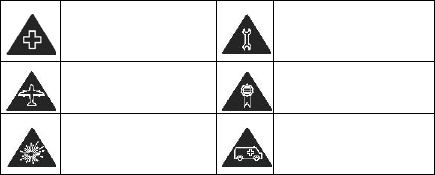
17
Turn off when asked to
in hospitals and
medical facilities.
Don’t take your phone
apart.
Turn off when told to in
aircrafts and airports.
Only use approved
accessories.
Turn off when near
explosive materials or
liquids.
Don’t rely on your
phone for emergency
communications.
Radio Frequency (RF) Exposure
Radio Frequency (RF) Energy
This device meets the government’s requirements for exposure
to radio waves.
This device is designed and manufactured not to exceed the
emission limits for exposure to radio frequency (RF) energy set
by the Federal Communications Commission of the U.S.
Government:
The exposure standard for wireless mobile devices employs a
unit of measurement known as the Specific Absorption Rate, or
SAR. The SAR limit set by the FCC is 1.6W/kg. *Tests for SAR
are conducted using standard operating positions accepted by
the FCC with the device transmitting at its highest certified power
level in all tested frequency bands. Although the SAR is
determined at the highest certified power level, the actual SAR
18
level of the device while operating can be well below the
maximum value. This is because the device is designed to
operate at multiple power levels so as to use only the poser
required to reach the network. In general, the closer you are to a
wireless base station antenna, the lower the power output.
The highest SAR value for the device as reported to the FCC
when tested for use at the ear is 0.68W/kg and when worn on the
body, as described in this user guide, is 1.36W/kg (Body-worn
measurements differ among device models, depending upon
available enhancements and FCC requirements.)
While there may be differences between the SAR levels of
various devices and at various positions, they all meet the
government requirement.
The FCC has granted an Equipment Authorization for this device
with all reported SAR levels evaluated as in compliance with the
FCC RF exposure guidelines. SAR information on this device is
on file with the FCC and can be found under the Display Grant
section of http://www.fcc.gov/oet/ea/fccid/ after searching on:
FCC ID: SRQ-OPENII
For body worn operation, this device has been tested and meets
the FCC RF exposure guidelines for use with an accessory that
contains no metal and the positions the handset a minimum of
1.0 cm from the body. Use of other enhancements may not
ensure compliance with FCC RF exposure guidelines. If you do
no t use a body-worn accessory and are not holding the device at
the ear, position the handset a minimum of 1.0 cm from your
body when the device is switched on.
19
FCC Compliance
This device complies with part 15 of the FCC Rules. Operation is
subject to the following two conditions: (1) This device may not
cause harmful interference, and (2) this device must accept any
interference received, including interference that may cause
undesired operation.
Caution: Changes or modifications not expressly approved by
the manufacturer could void the user’s authority to operate the
equipment.
NOTE: This equipment has been tested and found to comply with
the limits for a Class B digital device, pursuant to part 15 of the
FCC Rules. These limits are designed to provide reasonable
protection against harmful interference in a residential installation.
This equipment generates, uses and can radiate radio frequency
energy and, if not installed and used in accordance with the
instructions, may cause harmful interference to radio
communications. However, there is no guarantee that
interference will not occur in a particular installation. If this
equipment does cause harmful interference to radio or television
reception, which can be determined by turning the equipment off
and on, the user is encouraged to try to correct the interference
by one or more of the following measures:
Reorient or relocate the receiving antenna.
Increase the separation between the equipment and receiver.
Connect the equipment into an outlet on a circuit different
20
from that to which the receiver is connected.
Consult the dealer or an experienced radio/TV technician for
help.
Distraction
Driving
Full attention must be given to driving at all times in order to
reduce the risk of an accident. Using a phone while driving (even
with a hands free kit) can cause distraction and lead to an
accident. You must comply with local laws and regulations
restricting the use of wireless devices while driving.
Operating Machinery
Full attention must be given to operating machinery in order
to reduce the risk of an accident.
Product Handling
General Statement on Handling and Use
You alone are responsible for how you use your phone and any
consequences of its use.
You must always turn off your phone wherever the use of a
phone is prohibited. Use of your phone is subject to safety
measures designed to protect users and their environment.
21
Always treat your phone and its accessories with care and
keep it in a clean and dust-free place.
Keep the screen and camera lens clean. Unclean screen or
camera lens may slow down the phone's reaction to your
operations or lower image quality.
Clean the device and its accessories with a soft material such
as cleaning cloth for eyeglass lenses. Do not use alcohol or
other corrosive substances for cleaning or allow them to get
inside.
Do not expose your phone or its accessories to open flames
or lit tobacco products.
Do not expose your phone or its accessories to liquid,
moisture or high humidity.
Do not drop, throw or try to bend your phone or its
accessories.
Do not paint your phone or its accessories.
Do not attempt to disassemble your phone or its accessories.
Only authorized personnel can do so.
Do not expose or use your phone or its accessories in a
environment with or that can reach extreme temperatures,
minimum - [5] and maximum + [50] degrees Celsius.
Do not place your phone inside or near heating equipments or
high pressure containers, such as water heaters, microwave
ovens, or hot cooking utensils. Otherwise, your phone may be
damaged.
22
Please check local regulations for disposal of electronic
products.
Do not carry your phone in your back pocket as it could break
when you sit down.
Small Children
Do not leave your phone and its accessories within the reach of
small children or allow them to play with it.
They could hurt themselves or others, or could accidentally
damage the phone.
Your phone contains small parts with sharp edges that may
cause an injury or may become detached and create a choking
hazard.
Demagnetization
To avoid the risk of demagnetization, do not allow electronic
devices or magnetic media to be close to your phone for a long
time.
Electrostatic Discharge (ESD)
Do not touch the SIM card’s metal connectors.
Antenna
Do not touch the antenna unnecessarily.
23
Normal Use Position
When placing or receiving a phone call, hold your phone to your
ear, with the bottom towards your mouth.
Air Bags
Do not place a phone in the area over an air bag or in the air bag
deployment area as an airbag inflates with great force and
serious injury could result.
Store the phone safely before driving your vehicle.
Seizures/Blackouts
The phone can produce a bright or flashing light. A small
percentage of people may be susceptible to blackouts or
seizures (even if they have never had one before) when exposed
to flashing lights or light patterns such as when playing games or
watching video. If you have experienced seizures or blackouts or
have a family history of such occurrences, please consult a
physician.
Repetitive Strain Injuries
To minimize the risk of Repetitive Strain Injury (RSI) when texting
or playing games with your phone:
Do not grip the phone too tightly.
Press the buttons lightly.
Use the special features which are designed to minimize the
24
times of pressing buttons, such as Message Templates and
Predictive Text.
Take many breaks to stretch and relax.
Emergency Calls
This phone, like any wireless phone, operates using radio
signals, which cannot guarantee connection in all conditions.
Therefore, you must never rely solely on any wireless phone for
emergency communications.
Loud Noise
This phone is capable of producing loud noises, which may
damage your hearing. Turn down the volume before using
headphones, Bluetooth stereo headsets or other audio devices.
Phone Heating
Your phone may become warm during charging and during
normal use.
Electrical Safety
Accessories
Use only approved accessories.
Do not connect with incompatible products or accessories.
Take care not to touch or allow metal objects, such as coins or
25
key rings, to contact or short-circuit in the battery terminals.
Never puncture the surface of the battery with sharp objects.
Connection to a Car
Seek professional advice when connecting a phone interface to
the vehicle electrical system.
Faulty and Damaged Products
Do not attempt to disassemble the phone or its accessories.
Only qualified personnel can service or repair the phone or its
accessories.
If your phone (or its accessories) has been submerged in water,
punctured, or subjected to a severe fall, do not use it until you
have taken it to be checked at an authorized service center.
Radio Frequency Interference
General Statement on Interference
Care must be taken when using the phone in close proximity to
personal medical devices, such as pacemakers and hearing
aids.
Pacemakers
Pacemaker manufacturers recommend that a minimum
separation of 15 cm be maintained between a mobile phone and
26
a pacemaker to avoid potential interference with the pacemaker.
To achieve this, use the phone on the opposite ear to your
pacemaker and do not carry it in a breast pocket.
Hearing Aids
People with hearing aids or other cochlear implants may
experience interfering noises when using wireless devices or
when one is nearby.
The level of interference will depend on the type of hearing
device and the distance from the interference source. Increasing
the separation between them may reduce the interference. You
may also consult your hearing aid manufacturer to discuss
alternatives.
Medical Devices
Please consult your doctor and the device manufacturer to
determine if operation of your phone may interfere with the
operation of your medical device.
Hospitals
Turn off your wireless device when requested to do so in
hospitals, clinics or health care facilities. These requests are
designed to prevent possible interference with sensitive medical
equipment.
Aircraft
Turn off your wireless device whenever you are instructed to do
27
so by airport or airline staff.
Consult the airline staff about the use of wireless devices
onboard the aircraft. If your device offers a ‘flight mode’, this must
be enabled prior to boarding an aircraft.
Interference in Cars
Please note that because of possible interference with
electronic equipment, some vehicle manufacturers forbid the
use of mobile phones in their vehicles unless a hands-free kit
with an external antenna is included in the installation.
Explosive Environments
Gas Stations and Explosive Atmospheres
In locations with potentially explosive atmospheres, obey all
posted signs to turn off wireless devices such as your phone or
other radio equipment.
Areas with potentially explosive atmospheres include fueling areas,
below decks on boats, fuel or chemical transfer or storage
facilities, and areas where the air contains chemicals or particles,
such as grain, dust, or metal powders.
Blasting Caps and Areas
Power off your mobile phone or wireless device when in a
blasting area or in areas posted power off “two-way radios” or
“electronic devices” to avoid interfering with blasting operations.
28
LEGAL INFORMATION
Copyright © 2014 ZTE CORPORATION.
All rights reserved.
No part of this publication may be quoted, reproduced, translated or used in
any form or by any means, electronic or mechanical, including
photocopying and microfilm, without the prior written permission of ZTE
Corporation.
Notice
ZTE Corporation reserves the right to make modifications on print errors or
update specifications in this guide without prior notice.
Disclaimer
ZTE Corporation expressly disclaims any liability for faults and damages
caused by unauthorized modifications of the software.
Images and screenshots used in this guide may differ from the actual
product. Content in this guide may differ from the actual product or
software.
Trademarks
ZTE and the ZTE logos are trademarks of the ZTE Corporation.
Other trademarks and trade names are the property of their respective
owners.
Manual No. : 07958450xxxx